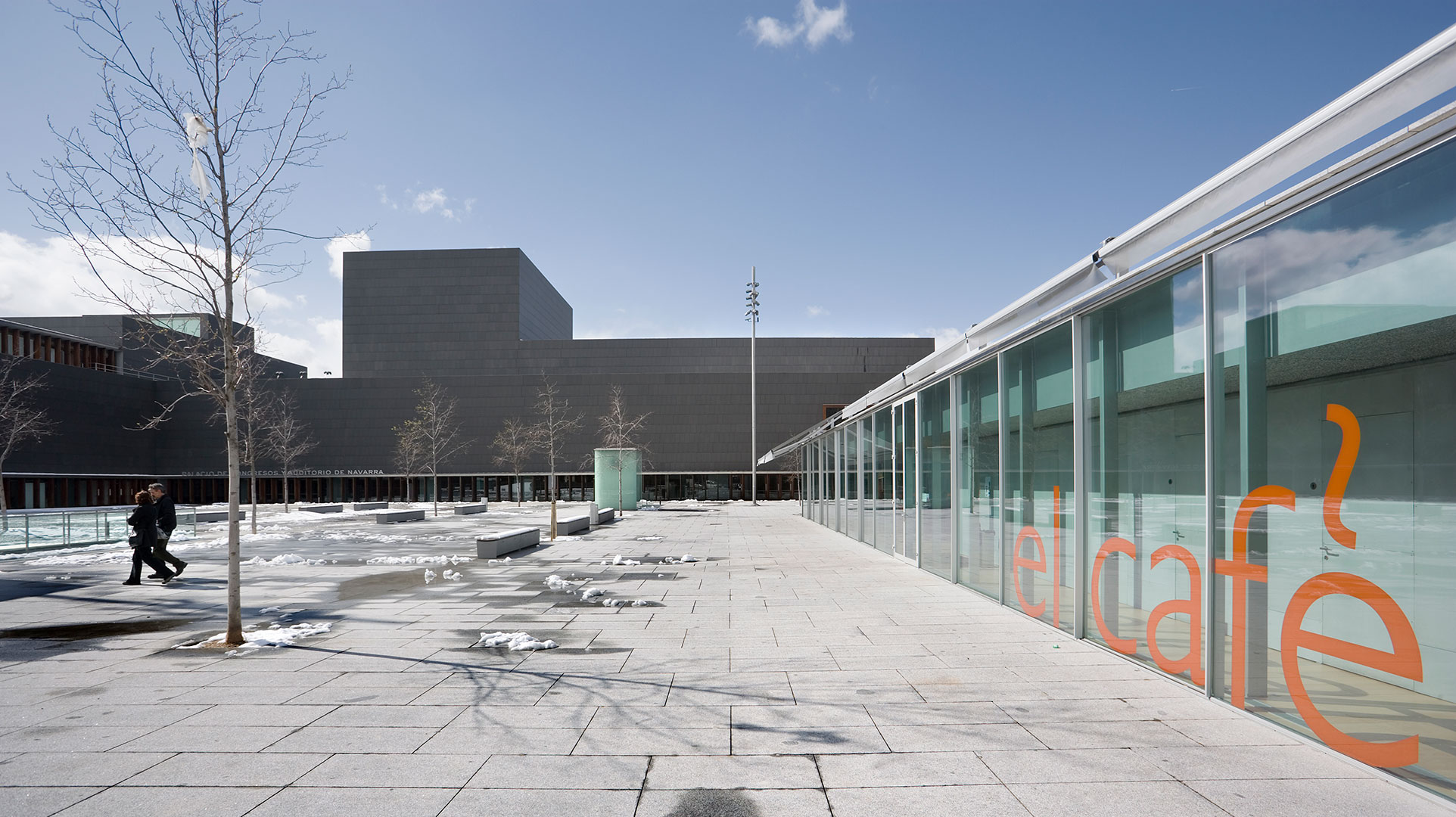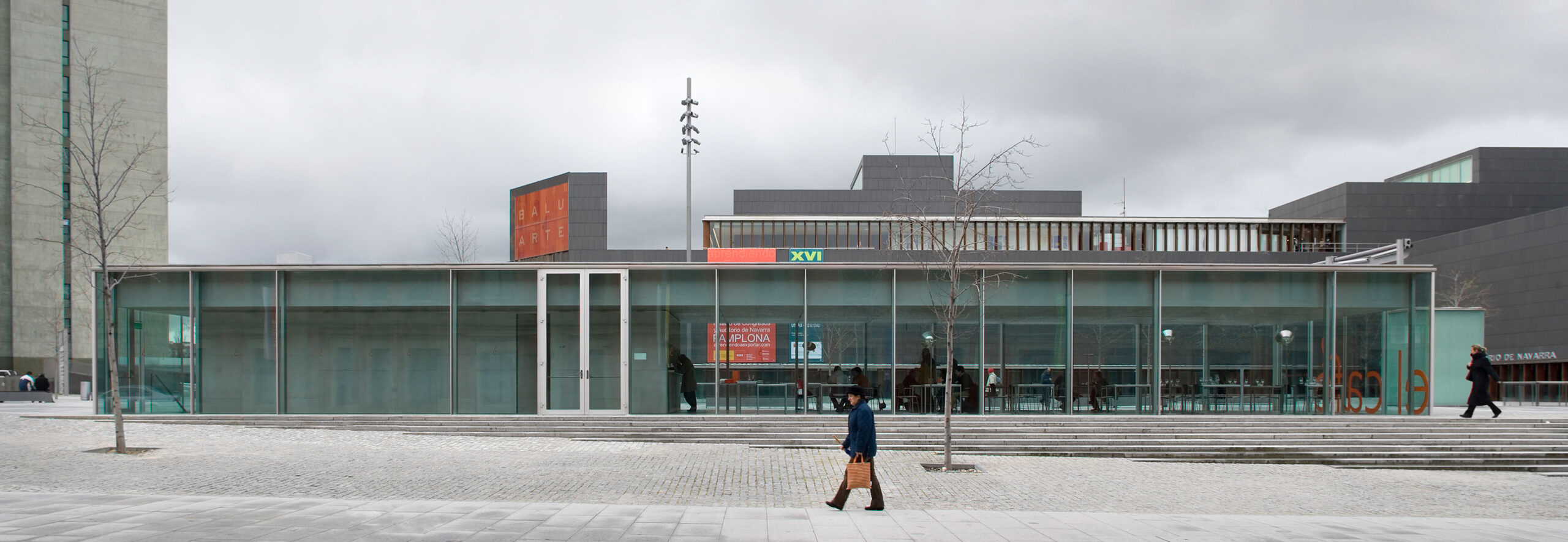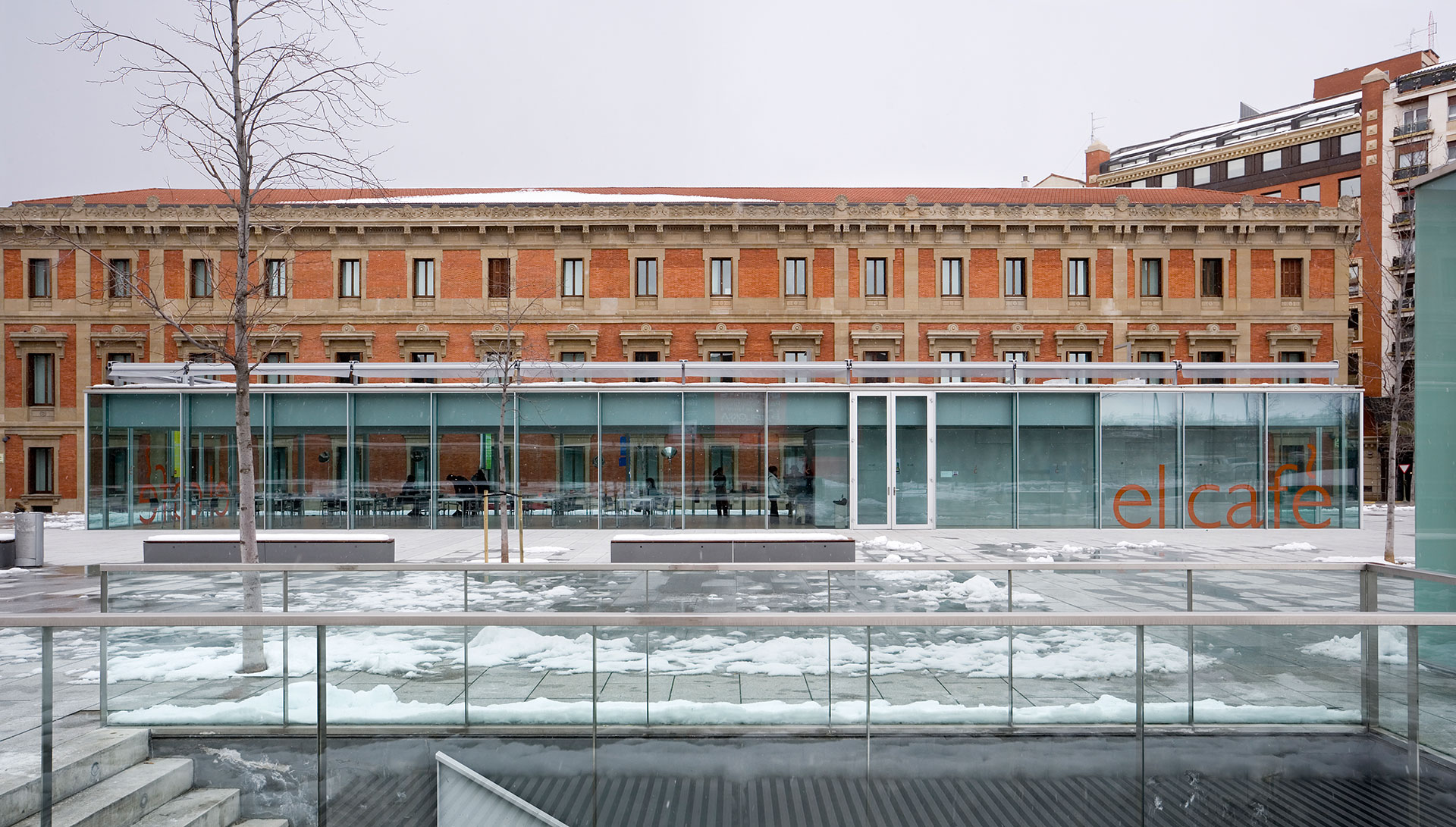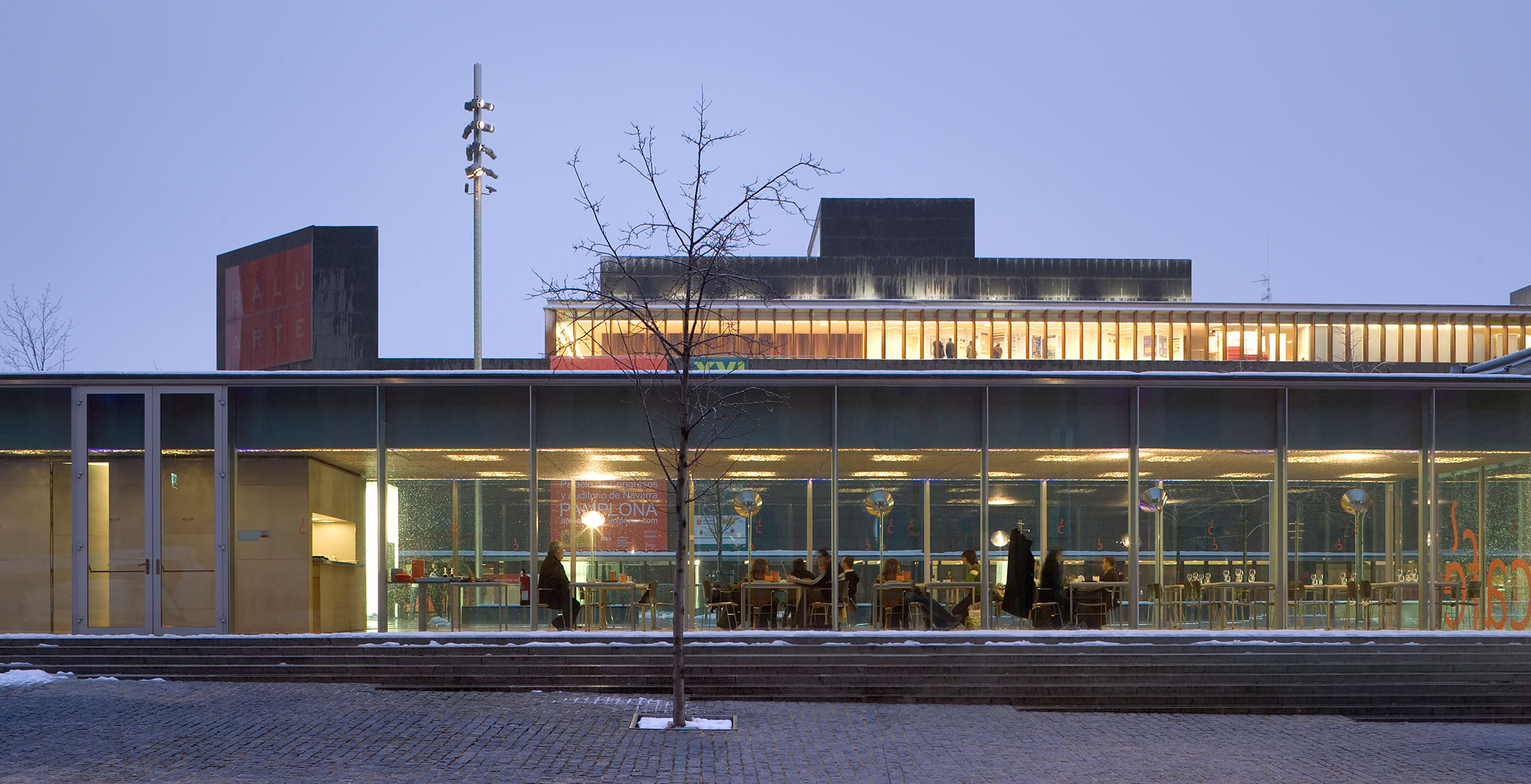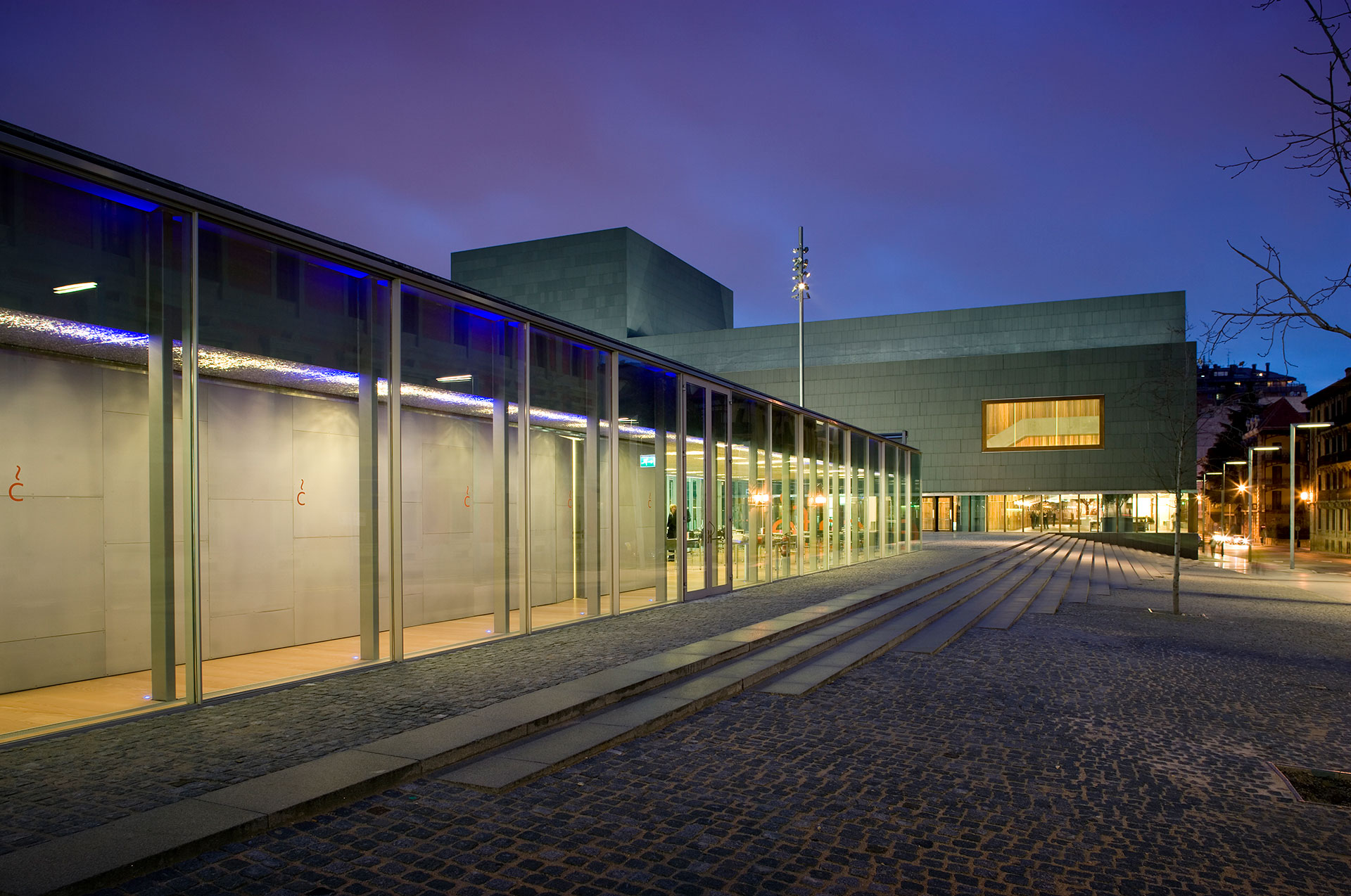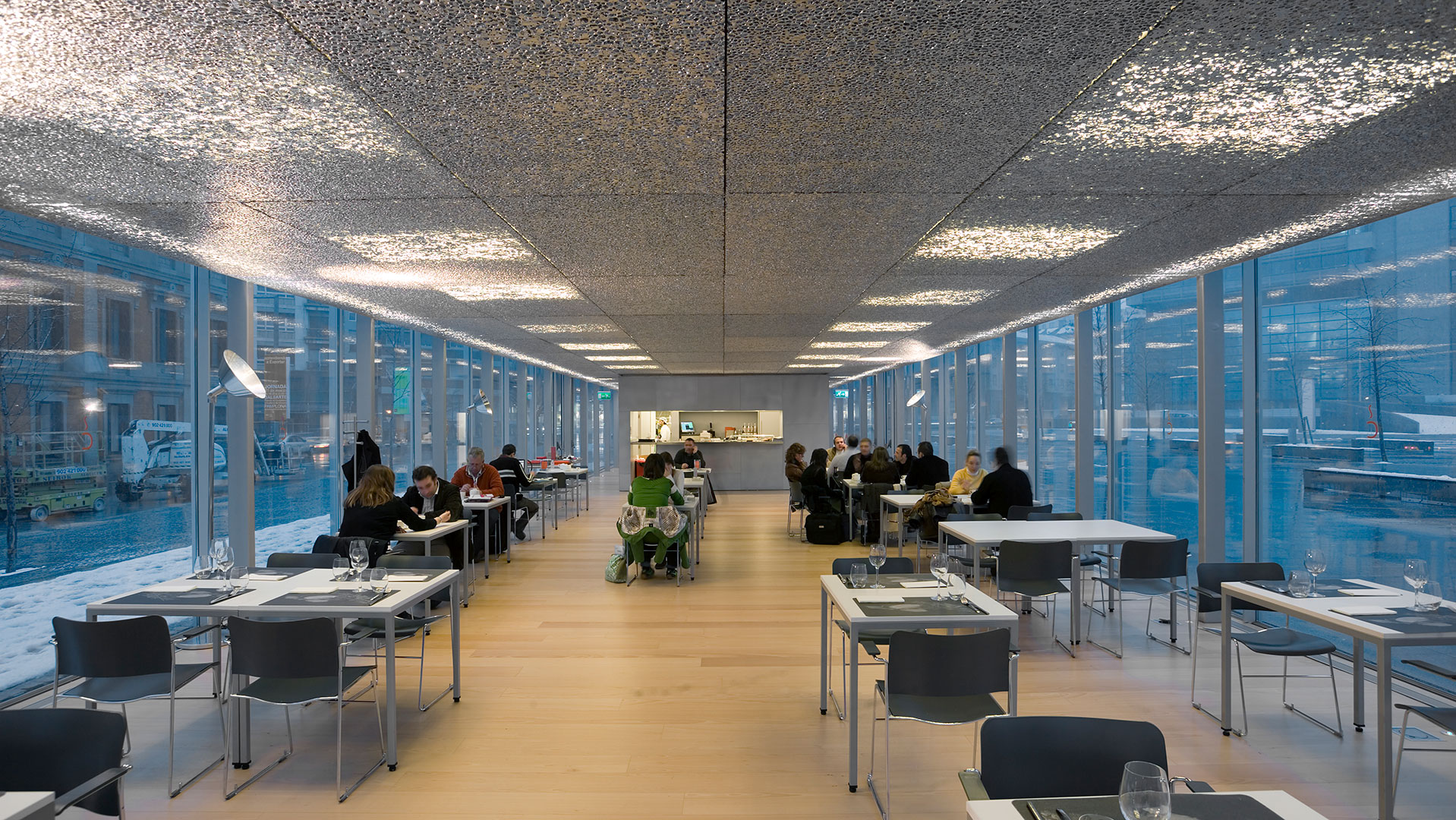Cafetería de Baluarte
El proyecto del Café del Baluarte además de pretender el diseño arquitectónico de una pieza de calidad formal surge de una reflexión con respecto al espacio urbano de la plaza y de los edificios que la conforman, el propio Baluarte y el Parlamento de Navarra.
No se podía, ni se debía, diseñar y ubicar un edificio opaco, cerrado, que hubiera supuesto dividir el espacio público en partes diferenciadas dejando el edificio del Parlamento, visualmente y de facto, fuera del conjunto.
La opción de una caja acristalada, muy abstracta, permite asegurar las transparencias a lo largo de todo el perímetro de manera que, desde el interior, sentados los usuarios, tuvieran la sensación de estar como en el exterior, sólo protegidos de las inclemencias atmosféricas, pero disfrutando de toda la profundidad espacial de la plaza y de la visión de las arquitecturas colindantes. La misma transparencia, durante el período estival, se transforma en apertura al desplazarse horizontalmente los cierres de vidrio. Se produce así una continuidad real entre el dentro y el fuera. Ahora todo el edificio es terraza, el edificio mismo es espacio público.
Ciudad
Plaza de Baluarte, Pamplona
País
España
